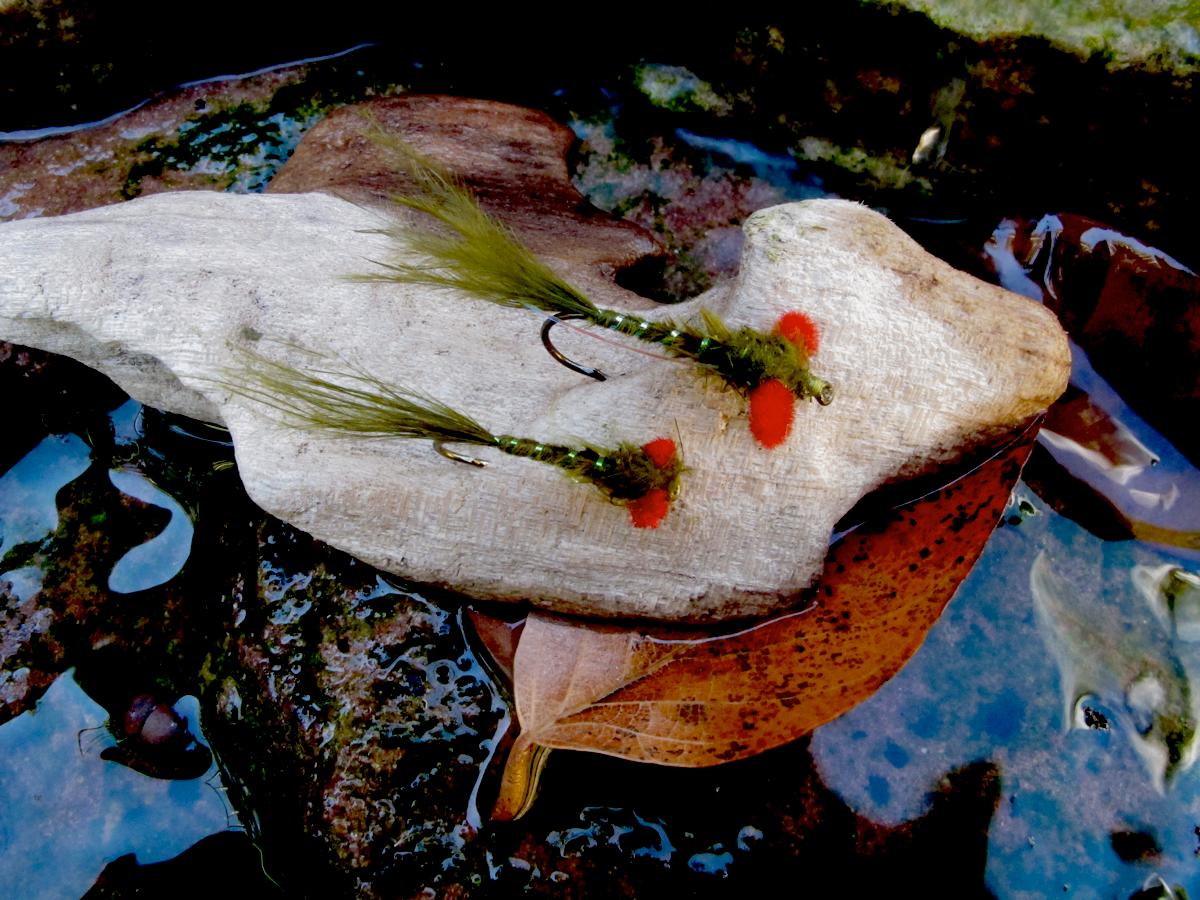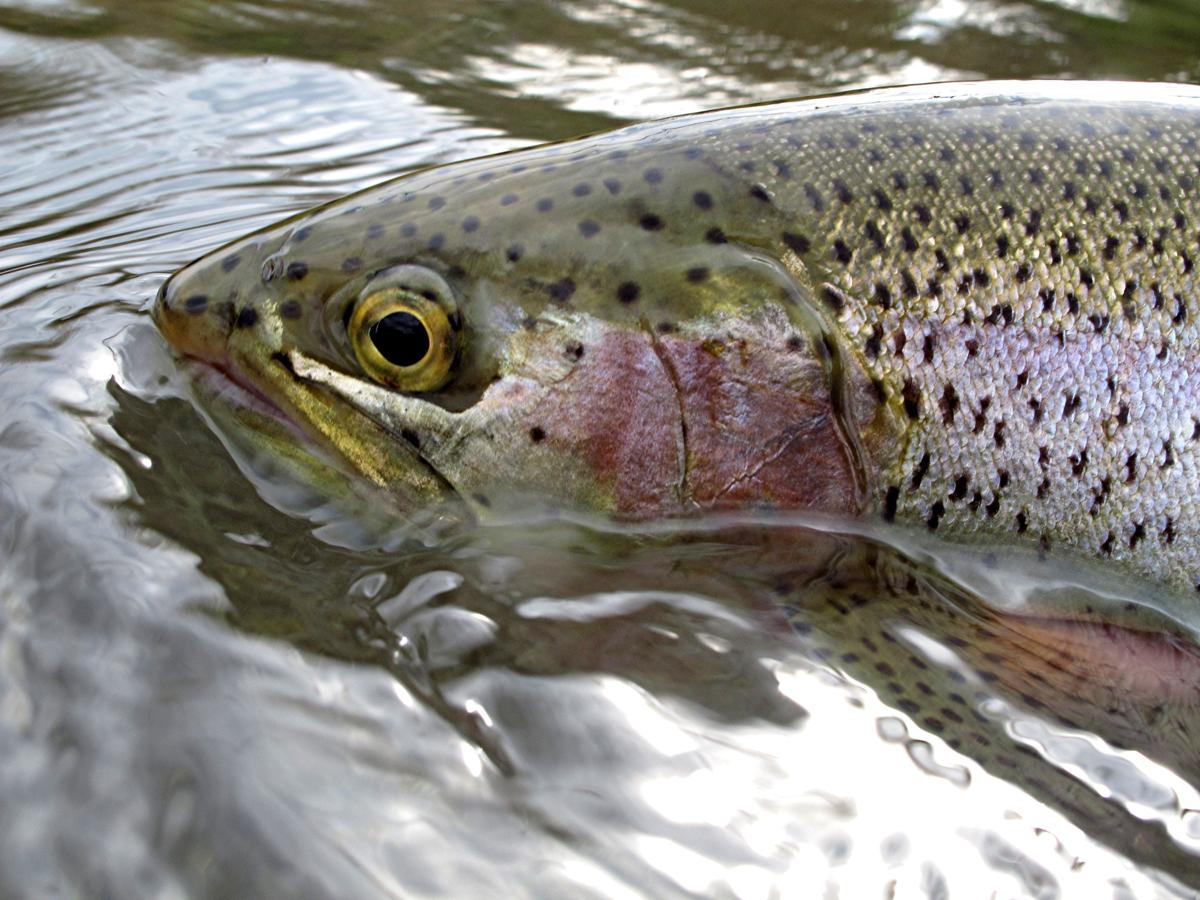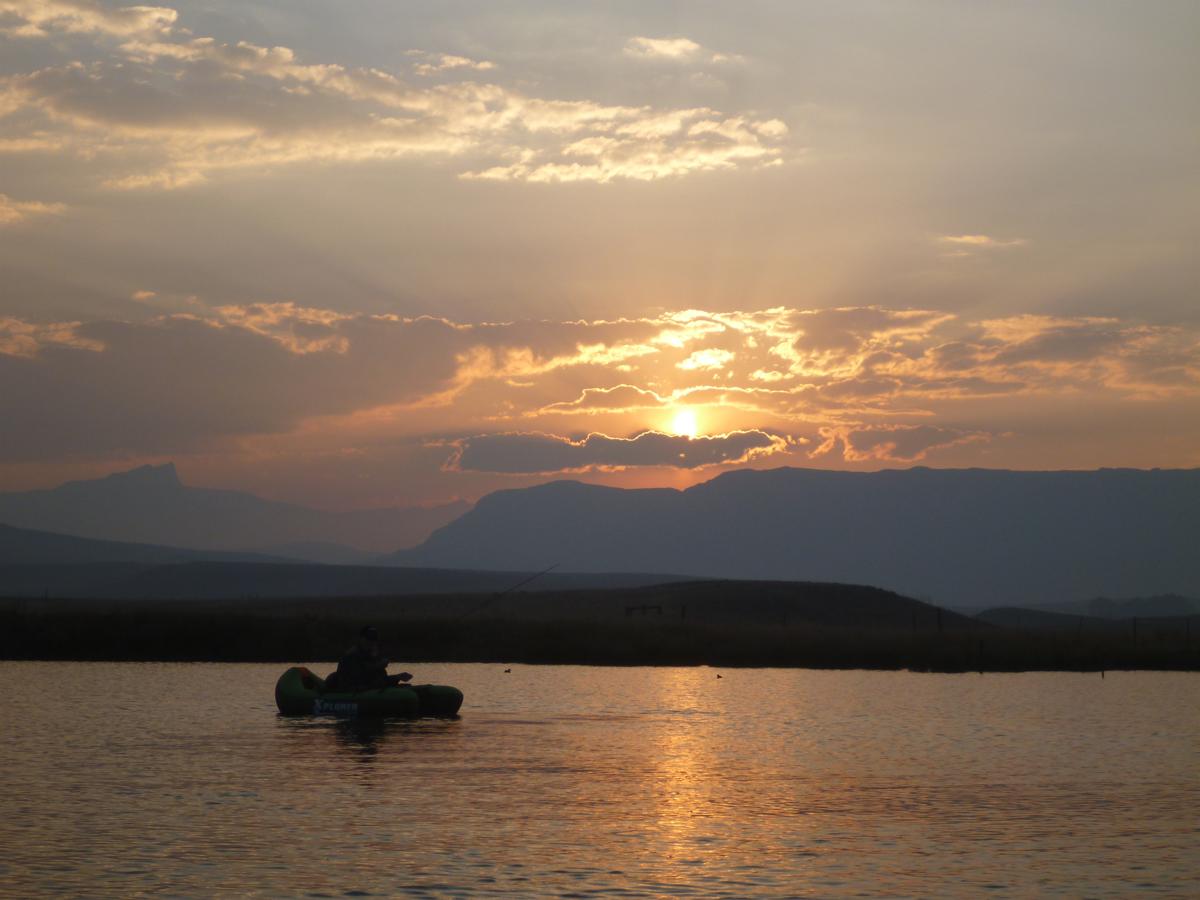
6 minute read
Heritage Flies : Part 7 - Peter Brigg The Red-Eyed Damsel Nymph
Heritage Flies - Part 7 The Red-Eyed Damsel Nymph
Peter Brigg
Advertisement
In chapter four of Tom Sutcliffe’s book Hunting Trout, titled “The Lakes at Inhluzane”, he describes this small area of the Dargle in the foothills of the Natal Drakensberg as containing a number of extremely fertile dams. They formed the crucible in which many, if not most, of our contemporary dam fishing flies and tactics were formed during the 1970/80 period.
It was In 1986 that by serendipitous good fortune, Hugh Huntley’s Red Eye Damsel was created. Some three decades later it remains a default pattern in the fly boxes of anglers who fish dams for trout
For many years anglers in the then Natal had used tiny loops of black Tuff chenille to represent the eyes of one of the staple foods of trout in Natal dams - the damselfly nymph. While tying flies one evening for the next day’s fishing trip, Hugh ran out of black chenille and used red instead. The next day Tom Sutcliffe had a blank day and Hugh caught twelve good trout - good in Natal terms being from three to seven pounds. This led to the development of what became known as “Hugh Huntley’s Red-eyed Damsel” which is now tied and sold commercially in South Africa. Although the first fly had a dubbed fur body, the fur was later replaced with olive marabou. It is normally tied on a 2- x long shank hook in sizes 8 to 14.
HB Huntley was born in Pietermaritzburg KZN in the mid-1930s, his nickname was Hooks and Bullets, which says a lot about the direction his life took. It was during the 1970's that Tom Sutcliffe first got to know him.
The friendship that developed meant that they ended up regularly fishing and hunting together for the next 25 years. Hugh died in May 2006. I asked Tom about their friendship and of course, the Hugh Huntley’s Red Eyed Damsel.
This is what he had to say -
‘ Adjectives don’t do this man’s outdoor skills any real justice. He was the best wing shot I ever knew, a wonderfully steady and measured fly fisher and, in his prime, he was undoubtedly the best fly tyer this country had. He tied with enviable speed, discipline and mastery. In judging any other fly tyer’s skills he was always clear. He believed anyone could tie a decent Gold Ribbed Hare's Ear, but tying a perfectly winged Connemara Black as Hugh used to put it, “… sorts the men from the children”. And I guess he was right, at least when it came to demonstrating any real mastery of fingers over feathers. “Hugh developed the Red-eyed Damsel and the Orangeade, but the truth is he tied many other useful patterns that, for one or other reason, didn’t stand the test of time – not to mention a few that may have been way ahead of their time. His sedge dry fly, for example, with a maroon seal’s fur body palmered with ginger hackle and topped with a wing of deer hair was almost identical in its tying to an Al Troth Elk Hair Caddis, long before any of us had ever heard of Al Troth". “Again with the Red-eye and Orangeade, as with the DDD, it was the Old Dam on Heatherdon in the KwaZulu Natal Midlands, and the 20 plus other lakes we had nearby, that formed the perfect crucible for stillwater fly pattern development in the 1970s and ‘80s. That I was around back then to share in all this with Huntley, to get to fish for close on 25 years with someone as savvy and as gifted as him, was sheer, magnificent luck".

“There’s little I can say about the Red-eyed Damsel that would come as even a mild revelation now, given that the pattern has been around a long time and remains one of the most used nymphs in South African stillwaters. Its origins go back to Hugh’s earliest damsel nymph imitation, a simple fly tied with a dyed olive cock hackle tail, a dark olive wool or seal’s fur body ribbed in gold, olive hackle tip legs and a thorax of bronze peacock. Hugh tinkered with the fly, later using olive marabou instead of seal’s fur or wool for the tail and body and black chenille for the eyes".
“The change from black to red chenille was entirely serendipitous. Hugh ran out of black chenille one night when we were on an extended stay up at the Old Dam and just swapped to red. At the time I didn’t think those bright red eyes would last beyond the day they were invented, and said as much which, in retrospect, was as poor a prediction of things to come as the prognostications of all the sceptics who thought Alexander Bell’s idea of a telephone would never work".

“I got to know the sort of conditions when the Red-eyed Damsel worked best up at the Old Dam. It would typically be a mid-summer morning on a bright, mildly windy day when the water had a nice surface chop and a green-tinted, glassy clarity and the occasional dorsal fin was showing just off a patch of weed. We always said you had a few seconds to get the Red-eye into the spot, that it should land gently and sink, but not be weighted, and that you immediately wanted to ‘feel’ the fly by taking up the slack. After that it was just a case of retrieving slowly and hanging onto your socks".
“The one short cut people took with the Red-eyed Damsel that Hugh could not handle was winding the twisted marabou around the chenille eyes in a figure of 8 to form the head and thorax. He argued, rightly I believe, that it added too much bulk, robbed the impression of movement and lost any hint of legs. He would break up a tuft of marabou into tiny pieces, dub the bits onto lightly waxed olive thread and then wrap evenly in figure of eights around the chenille eyes to form of a really buggy looking, slightly tattered thorax".
"I’ve mentioned the colour olive, but Hugh tied a few black and brown Red-eyes, and he was mighty fussy about the quality of the marabou he used. The fibres had to have lustre and if he was using green, then it had to be a rich olive green and not the lifeless, washed out pale or bottle green you see on too many commercial copies these days”.
Little did Hooks and Bullet Huntley know at the time that his Red Eyed Damsel would go on to be one of South Africa’s iconic stillwater fly patterns. I have no doubt that it will continue to bring many a trout to the net in the years to come.

Hook - Size 8 to 16, long shank nymph hook. Try Tiemco 5262 or 200R
Thread - To match body colour 8/0
Tail - Tips of olive or brown marabou barbs tied the length of the shank
Body - The tail marabou is twisted together as a rope, wound as a body, and then ribbed with fine oval gold tinsel or green Krystal Flash
Thorax - Small pieces of marabou fluff to match body colour dubbed onto the thread
Legs - As an option, Krystal Flash fibres can be added as legs. Match the colour, i.e. dark green with olive, copper with brown patterns
Eyes - Red Tuff Chenille trimmed to length.











